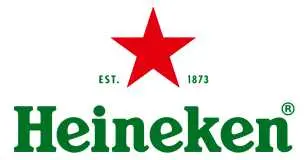Global Wearable Materials Market is projected to be worth 308.88 billion by 2034 and is anticipated to surge at a CAGR of 13.88%.
Wearable materials are specially engineered substances used in the creation of wearable devices and smart textiles, designed to be lightweight, flexible, durable, and comfortable for prolonged contact with the human body. These materials often incorporate advanced functionalities such as conductivity, stretchability, and breathability to support electronic integration without compromising user comfort. Common examples include conductive fabrics, flexible polymers, hydrogels, and nanomaterials like graphene and carbon nanotubes. Wearable materials are essential in health monitoring devices, fitness trackers, electronic clothing, and other applications where seamless interaction between the body and technology is required.
Drivers:
The growth of the wearable materials market is driven by advancements in material science, rising consumer demand for health-focused products, and the expansion of IoT. Innovative materials like conductive textiles and flexible polymers enable smart wearables with health monitoring, fitness tracking, and real-time data capabilities. Consumers seek breathable, moisture-wicking, and antimicrobial fabrics for enhanced comfort and hygiene. Additionally, fashion-tech integration has spurred the creation of smart textiles with dynamic features like color-changing or temperature control. These trends are fueling innovation and broadening wearable applications across healthcare, sports, and lifestyle sectors.
Challenges:
The wearable materials market faces several challenges that hinder its full potential. One major issue is the need to balance functionality with comfort—materials must be flexible, lightweight, and breathable while also integrating electronic components like sensors and circuits. Ensuring durability and washability of these smart fabrics without compromising performance is another critical hurdle. High production costs and complex manufacturing processes also limit large-scale adoption. Additionally, concerns around data security, user privacy, and potential skin irritation from prolonged contact with certain materials present further barriers. Regulatory compliance and the need for standardization across the industry add to these challenges.
Global Market Key Players:
Adidas AG, Apple Inc., Garmin Ltd., Nike, Inc., Samsung Electronics Co., Ltd., Sony Corporation, Xiaomi, Google LLC, Huawei Technologies Co., Ltd., Imagine Marketing Ltd.
Global Wearable Materials Market Segmentation:
By Product: Based on the Product, Global Wearable Materials Market is segmented as; Wrist-Wear, Eyewear & Headwear, Footwear, Neckwear, Body-wear, Others.
By Application: Based on the Application, Global Wearable Materials Market is segmented as; Consumer Electronics, Healthcare, Enterprise & Industrial Applications, Others.
By Region: This research also includes data for North America, Latin America, Asia-Pacific, Europe and Middle East & Africa.
This study also encompasses various drivers and restraining factors of this market for the forecast period. Various growth opportunities are also discussed in the report.






















